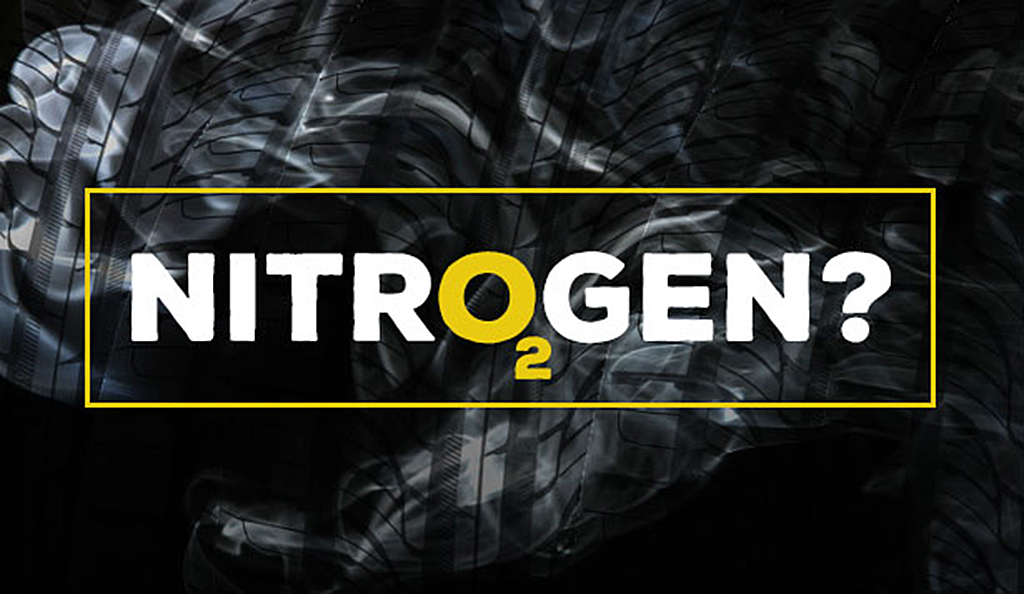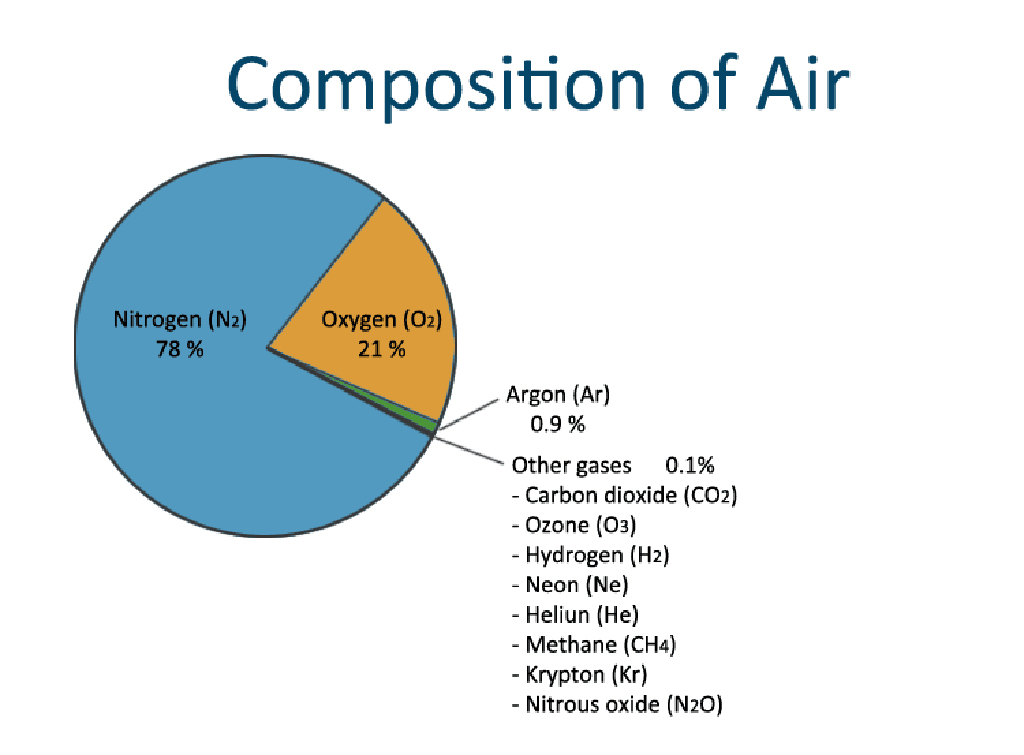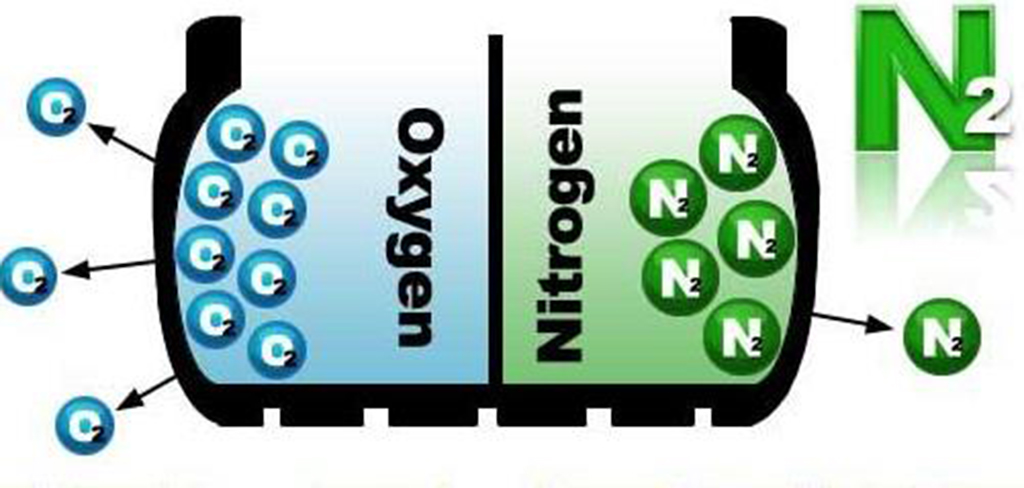The Truth About Nitrogen
Using Science to Determine the Real Benefits of Nitrogen Filled Tires
Article Date: August, 2017
Article and Photography by Mark Quasius

Tires are the most important component of any vehicle. Without them, you aren't going anywhere. They are also the most important
component when it comes to safety. If a tire fails while driving, the results can be catastrophic when you lose the ability to steer and stop the vehicle
in a safe manner.
But tires in themselves are not capable of supporting your vehicle. They need to be inflated to the correct pressure with air because
it's the air that carries the weight of your vehicle, which is why flat tires don't work so well. The air works in conjunction with the tire's footprint,
which is the area where it contacts the road, to determine how many pounds each tire can safely carry. Going with a larger tire increases load capacity. At
the same time, raising the tire's air pressure also increases its ability to carry more weight. To inflate a tire to a higher pressure you need to make certain
that the load rating, or ply count, is rated high enough for the pressure you need to use.
Of course, tires aren't always inflated to the correct pressure. Running an underinflated tire leads to damage due to excessive heat
buildup within the tire, which can cause the tire to fail. Therefore it's important to monitor your tire pressures to ensure they are properly inflated.
Enter Nitrogen
Rather than using compressed air to inflate your tires, there has been increased interest in using nitrogen to inflate them. Nitrogen
has been getting its fair share of press lately but much of it borders on overinflated (no pun intended) claims of what it will do for you. Some of these
claims make it seem like the best thing to hit the automotive seen since the V8 engine. On the other hand there is just as much press debunking it as snake
oil. In this article we'll examine some of these claims and see how they stack up against scientific evidence and do some comparisons between compressed air
and nitrogen. While it's true that nitrogen does have some benefits it appears that the average driver won't realize any of them. They are best seen at
extreme cases, such as racing or aircraft use where tires see extreme conditions.
Cost and Convenience
You can use your home air compressor to pump up your tires or stop at most gas stations. In some cases a gas station may charge for
the use of the air but for the most part compressed air is free and widely available. Nitrogen - not so much. Nitrogen isn't as widely available and both
nitrogen and the equipment needed to handle it costs money so any tire service center will most likely be charging you a fair amount to inflate your tires
with nitrogen. If you need to reinflate your tires while traveling you can use air to bring them to the correct pressure but you will no longer have a 100%
nitrogen filled tire so you'll need to purge the tire later on and refill with nitrogen. In short, nitrogen isn't as handy as compressed air and costs more.

Chemical Makeup
As we will see, nitrogen does have some advantages over compressed air but air does contain about 78% nitrogen, 21% oxygen and 1%
other gasses, including carbon dioxide. Therefore 78% of air already gains some of the benefits of nitrogen.
Maintaining Air Pressure
If you look at a tire under a microscope you'll find that the tire rubber is made up of microscopic strands that are stuck together.
These strands stretch and relax when driving as the tire flexes. This can allow air to escape from the tire due to permeation and it is estimated that a
tire can lose as much as 1 PSI for every month that the tire is driven. Therefore it is important to regularly monitor your tire pressures to maintain the
correct air pressure.
Nitrogen molecules are 300 picometers in size. Oxygen is 292 picometers in size. Technically, nitrogen molecules are larger therefore
they won't permeate the wall and escape as easily. However, those extra 8 picometers aren't a very significant amount so in reality, there isn't that much
difference. When you consider the chemical composition of air this becomes even more clear. Because air contains about 78% nitrogen this difference is even
more miniscule.

Consumer Reports conducted a study to compare the effects of pressure loss between tires filled with nitrogen and tires filled with
air. They tested 31 pairs of tires and filled one of each with compressed air and the other with nitrogen. The tires were left outside, exposed to the
elements. After one year the tires filled with compressed air lost 3.5 PSI while the tires filled with nitrogen only lost 2.2 PSI. So the difference was
only 1.2 PSI over a one year period.
Nitrogen is a gas and all gasses expand when heated. Generally this is about one PSI for every 10 degrees Fahrenheit of temperature
rise. If you fill your tires to the correct cold inflation pressure with nitrogen during summer, you will need to add additional nitrogen once winter rolls
around and the temperatures drop or else you'll be underinflated. This is true for both nitrogen and compressed air.
Fuel Economy
Fuel economy won't change with nitrogen. As long as your tires are maintained at their correct inflation pressure the rolling
resistance won't change regardless of whether your tires are filled with nitrogen or compressed air. Your best fuel economy tip is to buy a good quality
pressure gauge and check your tires regularly, at least once a month, to prevent running them in an underinflated condition which will increase rolling
resistance. For large class A motorhomes it's important to check them before and during long trips. A tire pressure monitoring system, or TPMS, is a
valuable item for safe travel.
Health Benefits
While running nitrogen in your tires won't make you live any longer, it can have some health benefits to your tires and wheels. While
compressed air is 78% nitrogen, there is still 21% oxygen and 1% trace gasses present in the mix. Oxygen can retain moisture which can oxidize the inner wall
of the tire. If the moisture level is really excessive it can cause a tire's steel belts to rust. If your coach has steel wheels, they are also susceptible
to rust once the protective coating wears away or ages. Nitrogen is a dry, anhydrous gas that will not support moisture. If the tire is filled with pure
nitrogen there won't be any oxygen or trace gasses available to support moisture.
However, these benefits are minimal. Again, we refer to the 78% ratio of nitrogen in compressed air so the 21% of oxygen in your tire
isn't a big player. It will take a very long time for these issues to take effect and by that time your tires will have to be replaced, either from tread
wear or sidewall dry rot. Oxygen and moisture are always present on the outside of the tire so atmospheric pressure is constantly attacking your tires from
the outside anyway.
It should also be mentioned that in some circles, mostly off-road Jeep groups, carbon dioxide (CO2) is used to fill tires during and
after a trail ride. However CO2 reacts with moisture to form Carbonic Acid (H2CO3), which can attack your wheels so this is not a good idea.
Rolling Benefits
Race cars, airplanes and heavy equipment tend to use nitrogen filled tires. However, these vehicles are subject to extreme conditions.
As we saw earlier, Nitrogen prevents moisture buildup in tires. Moisture causes the tire temperatures to increase more rapidly. This can be critical in a race
car but not so much for your motorhome. Nitrogen filled tires have 4% fewer degrees in temperature rise. All tires heat up when under use by about one pound
per square inch (PSI) for every 10 degrees Fahrenheit rise in temperature. But in practical numbers when we compare two tires, an air-filled tire will rise 10
degrees while the nitrogen-filled tire will rise 9.6 degrees under identical conditions. If your coach tires are working hard you might see a 30 degree rise
with air and a 29 degree rise with nitrogen so the differences aren't very dramatic.
Nitrogen is also lighter than air. Tires and wheels are considered unsprung weight. The heavier the wheel assembly, the harder it is
for the shock absorber to control rebound and keep it in contact with the pavement. But nitrogen is only 2% lighter than air so once again, the benefits are
minimal. That's an average of 6 grams for 4 tires on your daily driver. If you are running steel wheels you'll gain a real benefit by upgrading to aluminum
wheels, which are significantly lighter and more true.
Summary
The above science does show that nitrogen does have some advantages. It also shows that these benefits are best suited to extreme
applications rather than in an RV where these benefits are minimal. It certainly won't hurt to run nitrogen in your tires, it's just that you most likely
will never see any benefit from it. Gas expands with temperature, which is why it's important to check your tire pressures in the morning before you hit
the road, which is why they are called cold inflation pressures. Ambient temperatures never remain the same over time. If you air your tires up on an 80
degree summer day they will be underinflated on a cool fall or winter day so you will need to adjust your pressures accordingly. Your best advice is to
buy a quality tire pressure gauge and check your tire pressures on a regular basis.
Return to Home Page
If you enjoyed this article be sure to recommend RVtechMag.com to your friends, like us on Facebook or Twitter
or subscribe to our RSS feed.



|







